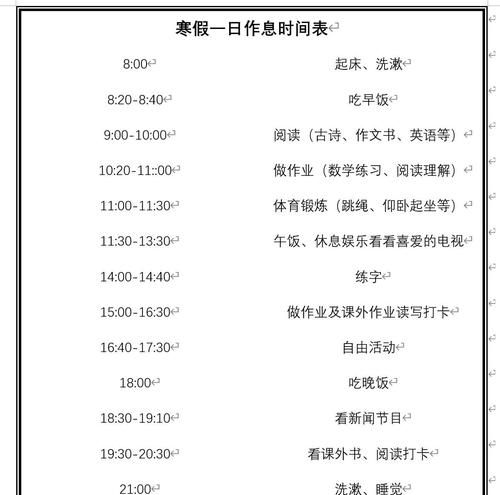本文目录
英语不定式的短语常用有哪些
英语中动词的主要功能是做谓语,而动词不定式不能作谓语,所以叫动词的非谓语形式。动词不定式有两种形式,一是带to的不定式,一是不带to的不定式,后者都由动词原形构成。
不定式有动词的性质,有语态和时态。如:
一般式主动语态:to
write
被动语态:to
be
written
进行式:to
be
writing
完成式:to
have
written
完成式被动语态:to
have
been
written
动词不定式的动词性质还表现在可带宾语和状语组成不定式短语。例:Bill
asked
me
not
to
say
his
name
aloud.
(比尔要我别大声叫他的名字。有宾语和状语。)
不定式也有名词的性质,表现在可以在句中做主语、宾语、表语等。如:
To
be
content
with
little
is
true
happiness.知足常乐。(主语)
She
wants
to
improve
her
biology.她想提高她的生物学水平。(宾语)
He
was
the
right
man
to
marry
Jane.
他正是要娶简的人。(定语)
动词不定式在句子中非常活跃,除了谓语之外所有的成分都能担当,位置往往灵活多变,要根据句子来具体分析,这大概是称为“不定”的原因吧。

不定式的几种形式
根据时态和语态,可以将不定式划分为六大形式。
1. 将来时主动式:to do
如:I have a lot of homework to finish in the afternoon. 我下午有很多家庭作业要做。
这个句子里下午做作业所以用不定式将来时;我做作业,逻辑主语是 I ,所以用主动式。
2. 将来时被动式:to be done.
如:This meeing is to be held next week.这次会议将于下周召开。这个句子中会议下周召 开所以用不定式将来时;会议被召开用被动式。
3. 进行时主动式:to be doing
如:She pretended to be reading books when he passed. 当他路过时她假装在看书。这个 句子中假装在做某事用不定式进行时;她看书,sh e和 read 是主动关系,用不定式主动式。
4. 进行时被动式:to be being done(不常用)
如:All these records seemto be being brokenin the last l0 years. 意为“近十年来, 这些 记录似乎一直在被打破。强调在一个时期内正在发生的事情,用进行时;纪录被打破,需要用 被动式。
5. 完成时主动式:to have done
用完成时强调不定式的动作发生在谓语动词之前。
如:He claimed to have returned home. 他声称自己已经回家。return 的动作发生在 claim 之前,用不定式完成时;He和return是主动关系用主动式。
6. 完成时被动式:to have been done
如:The earlist airpalne is said to have been invented in the 1900s. 最早的飞机据说发明在
20世纪。invent 的动作发生在 say 之前,用不定式完成时;airplane 和 invent 是被动关系, 飞机被发明,所以用被动式。
关注我,获得更多实用有趣的英语知识~

劳动法不定时工作制劳动时间上限
“其他工作和休息办法”具体是指“不定时工作制”和“综合计算工时工作制”两种。“不定时工作制”是不以标准工时制度确定的工作制度,企业以合理确定劳动者的劳动定额或其他考核标准来确定劳动者的工作时间和休息时间。“综合计算工时工作制”是分别以周、月、季、年等为周期,综合计算工作时间,但规定的条件是“其平均日工作时间和平均周工作时间应与法定标准工作时间基本相同”。
原劳动部《关于企业实行不定时工作制和综合计算工时工作制的审批办法》规定,企业对符合下列条件之一的职工,可以实行不定时工作制:一、企业中的高级管理人员、外勤人员、推销人员、部分值班人员和其他因工作无法按标准工作时间衡量的职工;二、企业中的长途运输人员、出租汽车司机和铁路、港口、仓库的部分装卸人员以及因工作性质特殊,需机动作业的职工;三、其他因生产特点、工作特殊需要或职责范围的关系,适合实行不定时工作制的职工。
但是,实行不定时工作制的职工在法定节假日被安排工作时,企业需支付加班费。

什么是动词不定式
1. 不定式定义:由to+动词原形构成。
不定式是一种非限定性动词。而非限定动词是指那些在句中不能单独充当谓语的动词,可分为不定式,动名词,现在分词和过去分词。
2.用途:
在句中不能作谓语。它具有动词的性质,本身可以带宾语和状语。
【动词不定式】
1.定义:动词 + 不定式
2.用途:
动词不定式在句中可以作句子任何成分。动词不定式的被动形式除了一般形式外还有其完成式和进行式。
[编辑本段][动词不定式的时态、语态]
动词不定式可以作以上各种成分,但它毕竟是动词,所以有动词的属性
动词不定式及其短语还可以有自己的宾语、状语,虽然动词不定式在语法上没有表面上的直接主语,但它表达的意义是动作,这一动作一定由使动者发出。这一使动者我们称之为 逻辑主语,其形式如下:
主动形式 被动形式
一般式 (not) to make (not) to be made
完成式 (not) to have made ( not) to have been made
进行式 (not) to be making (not) to have been making
(1)语态
如果动词不定式的逻辑主语是这个不定式所表示的动作的承受者,不定式一般要用被动语态形式。如:
It's a great honour to be invited to Mary's birthday party.(不定式作主语)
It was impossible for lost time to be made up.(不定式作主语)
I wish to be sent to work in the country.(不定式作宾语)
Can you tell me which is the car to be repaired?(不定式作定语)
He went to the hospital to be examined.(不定式作状语)
在There be结构中,修饰主语的不定式可用被动,也可用主动。如:There are still many things to t ake care of (to be taken care of).但有时两种形式表达的意思不同,如:These is nothing to do now.( We have nothing to do now.) There is nothing to be done now.(We can do nothing now.)
(2)时态
1) 现在时:一般现在时表示的动词,有时与谓语动词表示的动作同时发生,有时发生在谓语动词的动作之后。
He seems to know this.
I hope to see you again. = I hope that I'll see you again. 我希望再见到你。
2) 完成时:表示的动作发生在谓语动词表示的动作之前。
I'm sorry to have given you so much trouble.
He seems to have caught a cold.
3) 进行时: 表示动作正在进行,与谓语动词表示的动作同时发生。
He seems to be eating something.
4) 完成进行时:
She is known to have been wreaking on the problem for many years.
[编辑本段][疑问词+不定式结构]
疑问词who,what,which,when,where,whether,how后可接不定式构成不定式短语,在句中作主语、宾语、表 语等。如:
①When to leave for London has not been decided yet. (不定式在句子中做主语)
②Mr. Smith didn't know whether to leave or stay there. (不定式在句子中做宾语)
③I asked Professor Xu how to learn English well. (不定式在句子中做间接宾语)
④The question was where to get the medicine needed. (不定式在句子中表语)
以上例句中疑问词+不定式部分,均可转换为相应的从句形式。如:①When we shall leave…③…how I
could learn…
经常在这种结构中使用的动词有:consider,decide,discover,explain,find out,forget,hear,know,lea rn,observe,understand,wonder等。
[编辑本段][动词不定式的语法功能]
一、作主语
动词不定式作主语时,句子的谓语动词常用单数,其位置有以下两种:
(1)把不定式置于句首。如:
To get there by bike will take us half an hour.
(2)用it作形式主语,把真正的主语不定式置于句后,常用于下列句式中。如:
①It+be+名词+to do
It's our duty to take good care of the old.
②It takes sb+some time+to do
How long did it take you to finish the work?
③It+be+形容词+for sb+to do
It is difficult for us to finish writing the compositionin a quarter of an hour.
④It+be+形容词+of sb+to do
It is stupid of you to write down everything the teachersays.
⑤It seems(appears)+形容词+to do
It seemed impossible to save money.
在句型③中,常用表示客观情况的形容词,如:difficult,easy,hard,important,impossible,necessary 等;在句型④中,常用careless,clever,good,foolish,honest,kind,lazy,nice,right,silly,stupid,wise等 表示赞扬或批评的词。在不定式前的sb,可看作其逻辑主语。这一句式有时相当于Sb is+形容词+to do句式 ,如:It'skind of you to help me with my English.=You are kind to helpme with my English.
(3)举例
1) It's easy (for me) to do that.我做这事太容易了
easy, difficult, hard, important, possible, impossible, comfortable, necessary, better;
the first, the next, the last, the best, too much, too little, not enough
It's so nice to hear your voice.
听到你的声音真高兴。
It's necessary for you to lock the car when you do not use it.
当你不用车的时候,锁车是有必要的。
2) It's very kind of him to help us. 他帮助我们,他真好。
Kind, nice, stupid, rude, clever, foolish, thoughtful, thoughtless, brave, considerate(考虑周到的), silly, selfish(自私的)
例句:
It was silly of us to believe him. 我们真愚蠢,竟然相信了他。
It seemed selfish of him not to give them anything. 他不给他们任何东西,这显得太自私了。
注意:1) 其他系动词如,look,appear等也可用于此句型
2) 不定式作为句子成分时,动词用单数形式。
3) 当不定式作主语的句子中又有一个不定式作表语时,不能用It is… to…的句型
(对)To see is to believe. 百闻不如一见。
(错)It is to believe to see.
二、作宾语
1) 动词+ 不定式
afford. aim. appear. agree. arrange . ask . be . decide. bother . care . choose . come. dare. demand. desire. determine . expect. elect . endeavor .hope. fail . happen . help . hesitate .learn . long . mean. manage . offer . ought. plan . prepare. pretend . promise. refuse. seem. tend. wait . wish. undertake.
举例:
The driver failed to see the other car in time.
司机没能及时看见另一辆车。
I happen to know the answer to your question.
我碰巧知道你那道问题的答案。
2)动词+不定式 ;动词+宾语+不定式
ask, beg, choose, expect , hate, help intend like, love, need prefer, prepare, promise, want, wish…
I like to keep everything tidy. 我喜欢每件东西都保持整洁。
I like you to keep everything tidy. 我喜欢你使每件东西都保持整洁。
I want to speak to Tom. 我想和汤姆谈话。
I want you to speak to Tom. 我想让你和汤姆谈话。
3) 动词+疑问词+ to
decide, know, consider forget, learn, remember, show, understand, see, wonder, hear, find out, explain, tell
Please show us how to do that. 请演示给我们如何去做。
There are so many kinds of tape-recorders on sale that I can't make up my mind which to buy.有这么多的录音机,我都拿不定主意买哪一种。
注意:疑问词带不定式在句中作成分时,谓语动词用单数。
The question is how to put it into practice.
问题是怎样把它付诸实施。
4)以下动词后,只能跟不定式作宾语。
如:agree,ask,aim,arrange,choose,decide,demand,expect,fail ,help,hope,learn,long,manage,offer,plan,prepare,
pretend,promise,refuse,wish 等,这些词大部分可接that引导的从句。如:
I decided to ask for my money back.
I decided that I would ask for my money back.
When our visit to the farm was over,we expected to startback on foot.
When our visit to the farm was over, we expected that wewould start back on foot.
5)当复合宾语中的宾语是不定式时,先用形式宾语it代替不定式,把不定式置于补语之后,即:主语+动 词+it+补语+to do句式。如:
We think it quite important for us to learn a foreignlanguage well.
He feels it his duty to help the poor.
三、作补语
1) 动词+宾语+不定式(to do)
advise allow appoint believe cause challenge command compel consider declare drive enable encourage find forbid force guess hire imagine impel induce inform instruct invite judge know like order permit persuade remind report request require select send state suppose tell think train trust understand urge warn
例句:
a. Father will not allow us to play on the street.
父亲不让我们在街上玩耍。
b. We believe him to be guilty.
我们相信他是有罪的。
Find 的特殊用法:
Find 后可用分词做宾补,或先加形式宾语,再加形容词,最后加带to 的动词不定式。find后也可带一个从句。此类动词还有get,have。
I found him lying on the ground.
I found it important to learn.
I found that to learn English is important.
典型例题:
The next morning she found the man ___ in bed,dead.
A. lying B. lie C. lay D. laying
答案:A.find的宾语后面,用分词或分词短语,起宾语补足语作用。现在分词表达主动,也表达正在进行,过去分词表达被动。
2) to + be 的不定式结构,作补语的动词。
Acknowledge, believe, consider, think, declare(声称), discover, fancy(设想), feel find, guess, judge, imagine, know, prove, see(理解), show, suppose, take(以为), understand
We consider Tom to be one of the best students in our class.
我们认为汤姆是班上最好的学生之一。
典型例题
Charles Babbage is generally considered ___ the first computer.
A. to invent B. inventing C. to have invented D. having invented
答案:A. 由consider to dosth. 排除B、D。. 此句只说明发明这一个事实,不定式后用原形即可。而C为现在完成时,发明为点动词一般不用完成时,且此处也不强调对现在的影响,因此不选C。
3) to be +形容词
Seem, appear, be said, be supposed, be believed, be thought, be known, be reported, hope, wish, desire, want, plan, expect, mean…
The book is believed to be uninteresting.
人们认为这本书没什么意思。
4) there be+不定式
believe, expect, intend, like, love, mean, prefer, want, wish, undrstand
We didn't expect there to be so many people there.我们没料到会有那么多人在哪里。
有些动词需用as 短语做补语,如regard, think believe, take, consider.
We regard Tom as our best teacher. 我们认为汤姆是我们最好的老师。
Mary took him as her father . 玛丽把他当作自己的父亲。
四、作表语
不定式作表语表示具体动作或将来动作;动名词作表语表示抽象的一般行为。
①To be kind to the enemy is to be cruel to the people.
②My chief purpose is to point out the difficulties ofthe matter.
③What I would suggest is to put off the meeting.
当主语和表语都是不定式时,其含义一是条件,一是结果(例①)。当主语是aim,duty,hope,idea,mista ke,plan,purpose,suggestion等为中心词的名词词组(例②)时,或以what引导的名词性分句(例③),不定 式说明主语的内容。
④Our work is serving the people.
⑤What he likes is taking a walk after supper.
⑥The story told by Mr.Wang is interesting.
④⑤句动名词作表语,与主语部分可以转换,如Serving thepeople is our work,而⑥句中是现在分词作 表语,说明主语的性质、状态,现在分词具有形容词的各种特征,另外,动名词作表语还应与进行时态区别开 来。
五、作状语
1)目的状语
To… only to (仅仅为了), in order to, so as to, so(such)… as to… (如此……以便……)
He ran so fast as to catch the first bus. 他飞快地跑以便赶上第一班车。
I come here only to say good-bye to you. 我来仅仅是向你告别。
2)作结果状语,表事先没有预料到的,要放在句子后面。
What have I said to make you angry.
He searched the room only to find nothing.
3) 表原因
I'm glad to see you.
典型例题
The chair looks rather hard, but in fact it is very comfortable to ___.
A. sit B. sit on C. be seat D. be sat on
答案:B. 如果不定式为不及物动词,其后应有必要的介词。当动词与介词连用时,常位于"形容词+动词不定式"结构的末尾。
六、作定语
⒈不定式作定语
不定式在句中作定语,置于被修饰的名词或代词之后。如:
①The next train to arrive is from Washington.
②Have you anything to be taken to your sister?
③Do you have anything to say on the question?
④Would you please give me some paper to write on?
⑤My wish to visit France has come true at last.
不定式短语作定语和被修饰词之间表示以下关系:
(1)表示将来的动作(例①)。
(2)与被修饰词之间有动宾关系,如是不及物动词,则需加介词(例④)。
(3)与被修饰词之间有动宾关系,同时与句中其它词之间又有逻辑上的主谓关系时,尽管有被动含义,却仍 用主动语态(例③);如只有动宾关系,而无逻辑上的主谓关系,则需用被动语态(例②)。
(4)不定式作定语时,一般可转换为定语从句,例①to arrive=that will arrive。
[编辑本段][省to 的动词不定式]
1) 情态动词 ( 除ought 外,ought to):
2) 使役动词 let, have, make:
3) 感官动词 see, watch, look at, notice , observe, hear, listen to, smell, feel, find 等后作宾补,省略to。
注意:在被动语态中则to 不能省掉。
I saw him dance.
=He was seen to dance.
The boss made them work the whole night.
=They were made to work the whole night.
4) 表示个人意愿或倾向的would rather,had better,might(just) as well:rather than置于句首时。
Rather than ride on a crowded bus,he always prefers to ride a bike.
5) Why… / why not…:
6) help 可带to,也可不带to, help sb (to) do sth:
7) but和except:but前是动词do时,后面出现的动词用不带to的动词不定式。
8) 由and, or和than连接的两个不定式,第二个to 可以省去:
9) 通常在discover, imagine, suppose, think, understand等词后,可以省去to be:
He is supposed (to be) nice. 他应该是个好人。
10)but作介词,后接不定式结构时,前面谓语动词部分若含有do的形式时,but后的不定式要省去to,否则要带to。
He wants to do nothing but go out.
He wants to believe anything but to take the medicine.
11)当两个或多个不定时短语由连词and,but或or连接时,后一个或几个不定式符号to常省略。但若表示对比、对照关系时,则不能省略。
He wants to move to France and marry the girl.
The purpose of new technologies is to make life easier,not to make it more difficult.
12)不定式做表语时,一般要带to,但若主语部分中含有do的各种形式时,符号to可省去。
We've missed the last bus.All we could do now is walk home.
典型例题
1) ---- I usually go there by train.
---- Why not ___ by boat for a change?
A. to try going B. trying to go C. to try and go D. try going
答案:D. why not 后面接不带to 的不定式,因此选D。
2) Paul doesn't have to be made ___. He always works hard.
A. learn B. to learn C. learned D. learning
答案:B. make后接不带to 的动词不定式,当其用于被动时,to 不可省略。
[编辑本段][动词不定式的否定式]
Tell him not to shut the window…
She pretended not to see me when I passed by. 我走过的时候,她假装没看见。
典型例题
1)Tell him ___ the window.
A. to shut not B. not to shut C. to not shut
D. not shut
答案:B。 tell sb to do sth 的否定形式为tell sb not to do sth.
2) She pretended ___ me when I passed by.
A. not to see B. not seeing C. to not see
D. having not seen
答案:A。 pretend 后应接不定式。其否定形式为pretend not to do sth.。
3)Mrs. Smith warned her daughter ___ after drinking.
A. never to drive B. to never driver
C. never driving D. never drive
答案:A。warn sb to do sth. 的否定形式为warn sb not to do sth. 此处用的是否定词never.
4) The boy wanted to ride his bicycle in the street,but his mother told him ____.
A. not to B. not to do C. not do it
D. do not to
答案:A。not to 为not to do it 的省略形式。可以只用to这个词,而不必重复整个不定式词组。及物动词do后应有名词、代词等,否则不对,因此B,D不对。
5) The patient was warned ___ oily food after the operation.
A. to eat no B. eating not C. not to eat
D. not eating
答案:C。warn一词要求后用不定式,此处为不定式的被动,否定形式为be warned not to do。
[编辑本段][不定式的特殊句型]
1、不定式的特殊句型so as to
1) 表示目的;它的否定式是so as not to do。
Tom kept quiet about the accident so as not to lose his job.
汤姆对事故保持沉默是为了不丢掉他的工作。
Go in quietly so as not to wake the baby.
轻点进去,别惊醒了婴儿。
2) so kind as to ---劳驾
Would you be so kind as to tell me the time?
劳驾,现在几点了。
2、 "Why not +动词原形"表达向某人提出建议
"为什么不……?" "干吗不……?"
例如:
Why not take a holiday?
干吗不去度假?
3、It's for sb.和 It's of sb.
1)for sb. 常用于表示事物的特征特点,表示客观形式的形容词,如easy, hard, difficult, interesting, impossible等:
It's very hard for him to study two languages. 对他来说学两门外语是很难的。
2)of sb的句型一般用表示人物的性格,品德,表示主观感情或态度的形容词,如good, kind, nice, clever, foolish, right。
It's very nice of you to help me. 你来帮助我,你真是太好了。
for 与of 的辨别方法:
用介词后面的代词作主语,用介词前边的形容词作表语,造个句子。如果道理上通顺用of,不通则用for。如:
You are nice. (通顺,所以应用of)。
He is hard. (人是困难的,不通,因此应用for。)
4、不定式的特殊句型too…to…
1)too…to 太…以至于…
He is too excited to speak.
他太激动了,说不出话来。
---- Can I help you ? 需要我帮忙吗?
---- Well, I'm afraid the box is too heavy for you to carry it, but thank you all the same. 不用了。这箱子太重,恐怕你搬不动。谢谢您。
2) 如在too前有否定词,则整个句子用否定词表达肯定, too 后那个词表达一种委婉含义,意 为"不太"。
It's never too late to mend. (谚语)
改过不嫌晚。
3) 当too 前面有only, all, but时,意思是:非常… 等于very。
I'm only too pleased to be able to help you. 我非常高兴能帮助你。
He was but too eager to get home. 他非常想回家。[动词不定式的"to"与介词的"to"区别] to 有两种用法:
一为不定式+动词原形;
一为介词+名词/动名词, to 在下面的用法中是第二种,即to+ 名词/动名词:
admit to承认,confess to承认,be accustomed to 习惯于,be used to 习惯于, stick to 坚持, turn to开始,着手于, devote oneself to 献身于, be devoted to 致力于, look forward to 盼望,pay attention to 注意
介词but,except,besides+to do(do)
在这种句型中,如介词前有动词do,后面应接不带to的不定式;如无do,则接to不定式,即带do不带to, 带to不带do。如:
The enemy soldiers had no choice but to give in.
On Sunday afternoon I had nothing to do but watch TV.
[编辑本段][动词不定式与动名词区别与联系]
1) 动名词与不定式的区别:
动名词表达的是: 状态,性质,心境,抽象,经常性,已发生的 不定式表达的是: 目的,结果,原因,具体,一次性,将发生的
2) 接不定式或动名词,意义相同。
3)在下列情况下,一般要用不定式:
①hate,like,love前有would(should)时,如:I'd like to have a cup of coffee.
②当谓语动词begin,continue,start等是进行式时,如:Thestudents are starting to work on the di fficult maths problem.
③begin,continue,start与know,understand等状态动词连用时,如:I soon began to understand what was happening.

以上就是关于不定时分为哪两种 ,英语不定式的短语常用有哪些的全部内容,以及不定时分为哪两种 的相关内容,希望能够帮到您。
